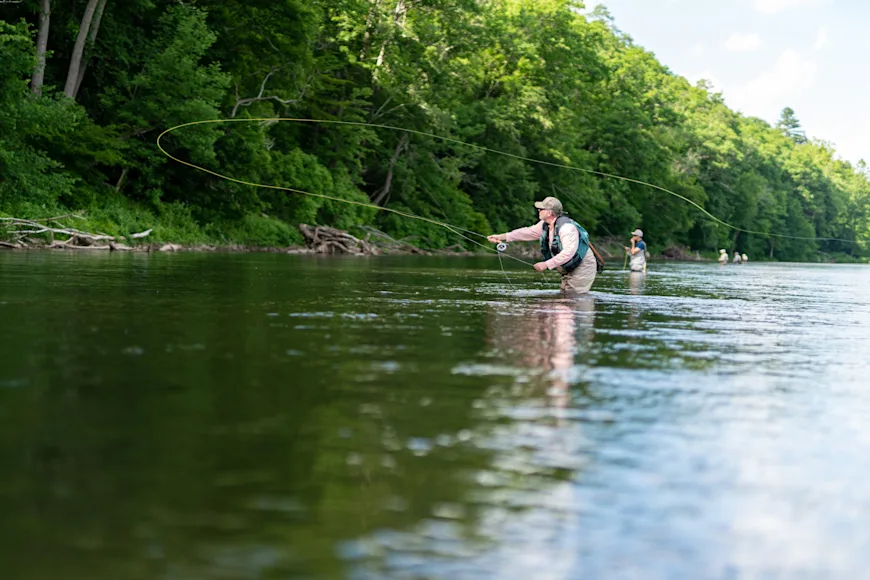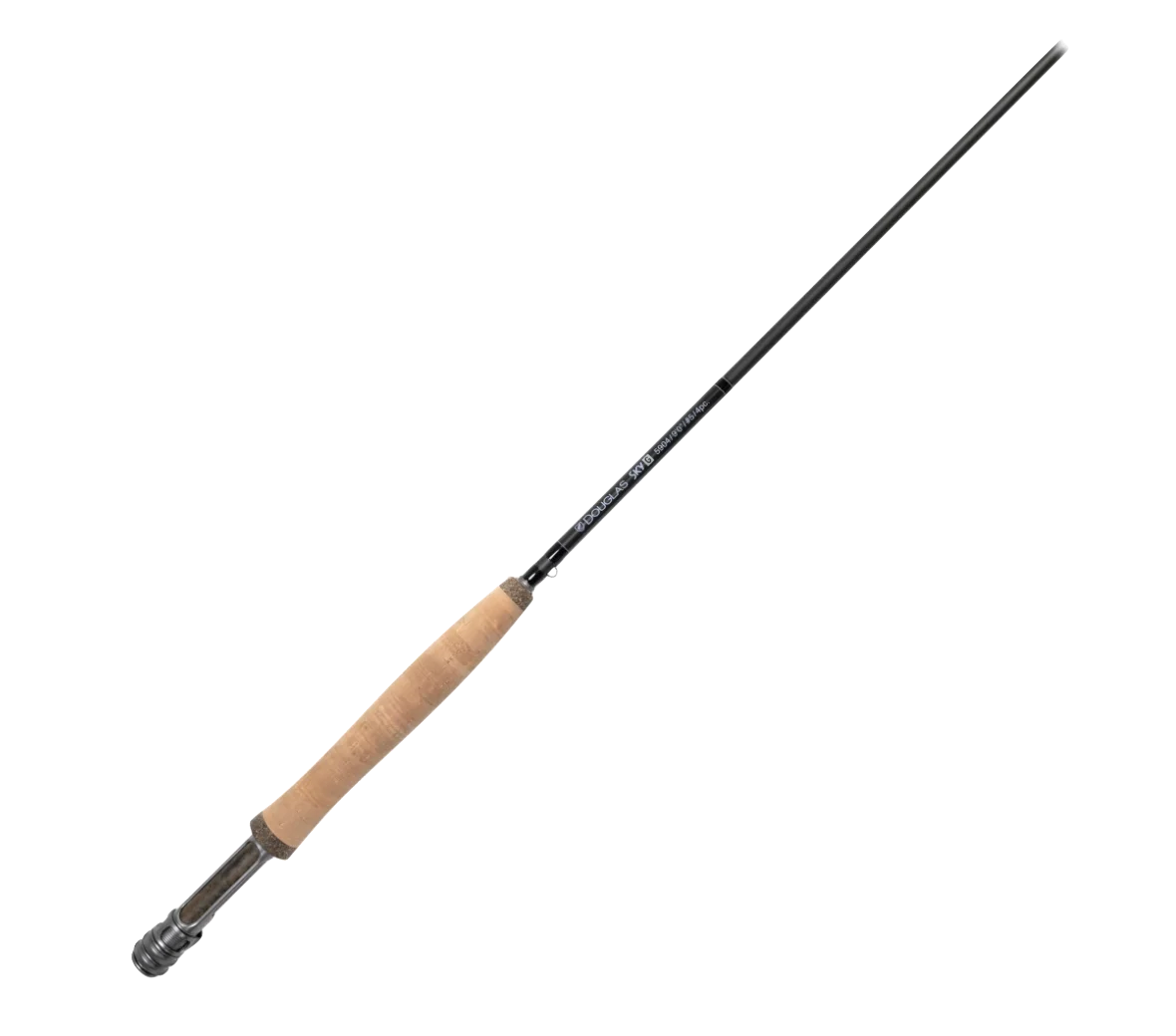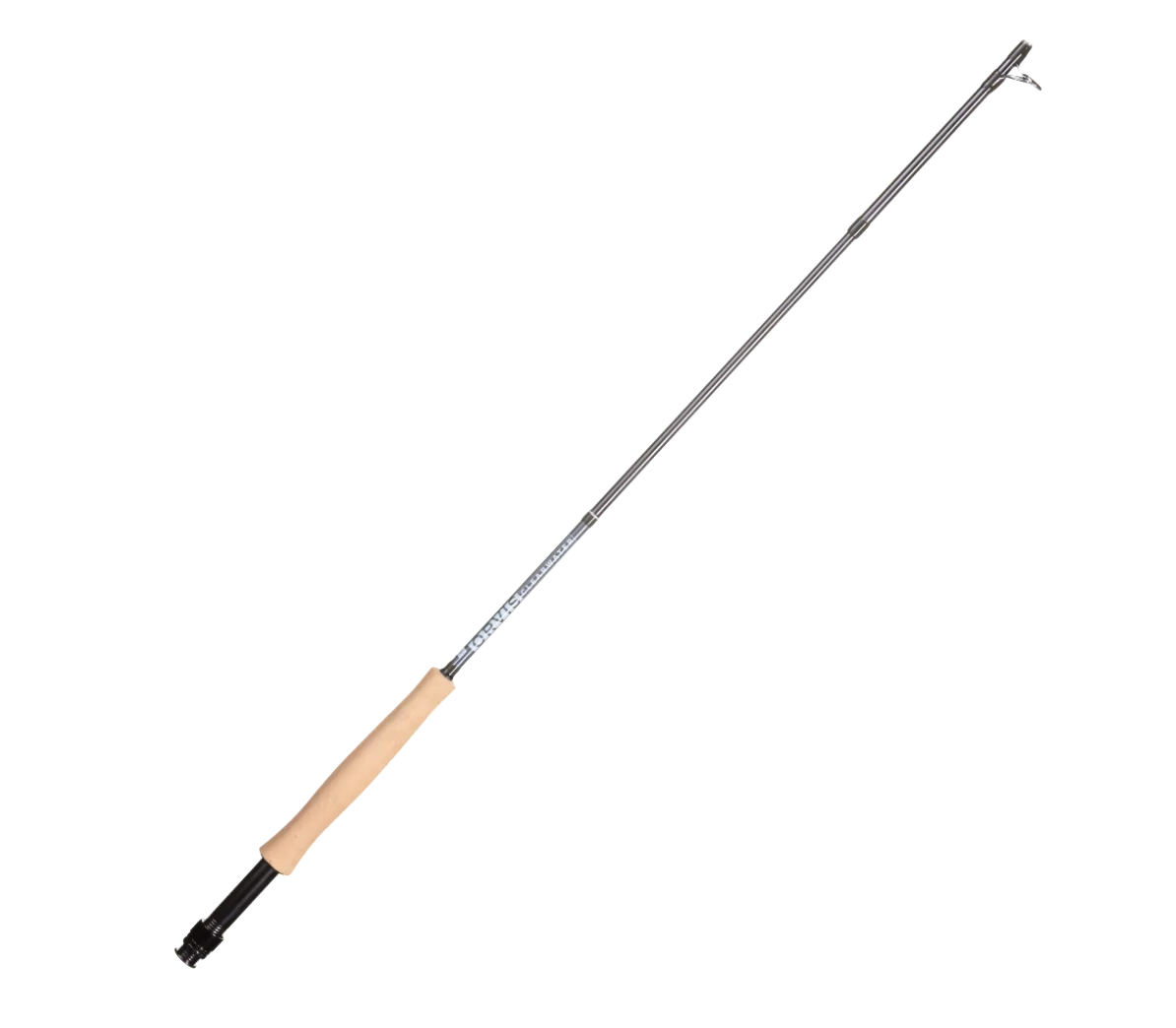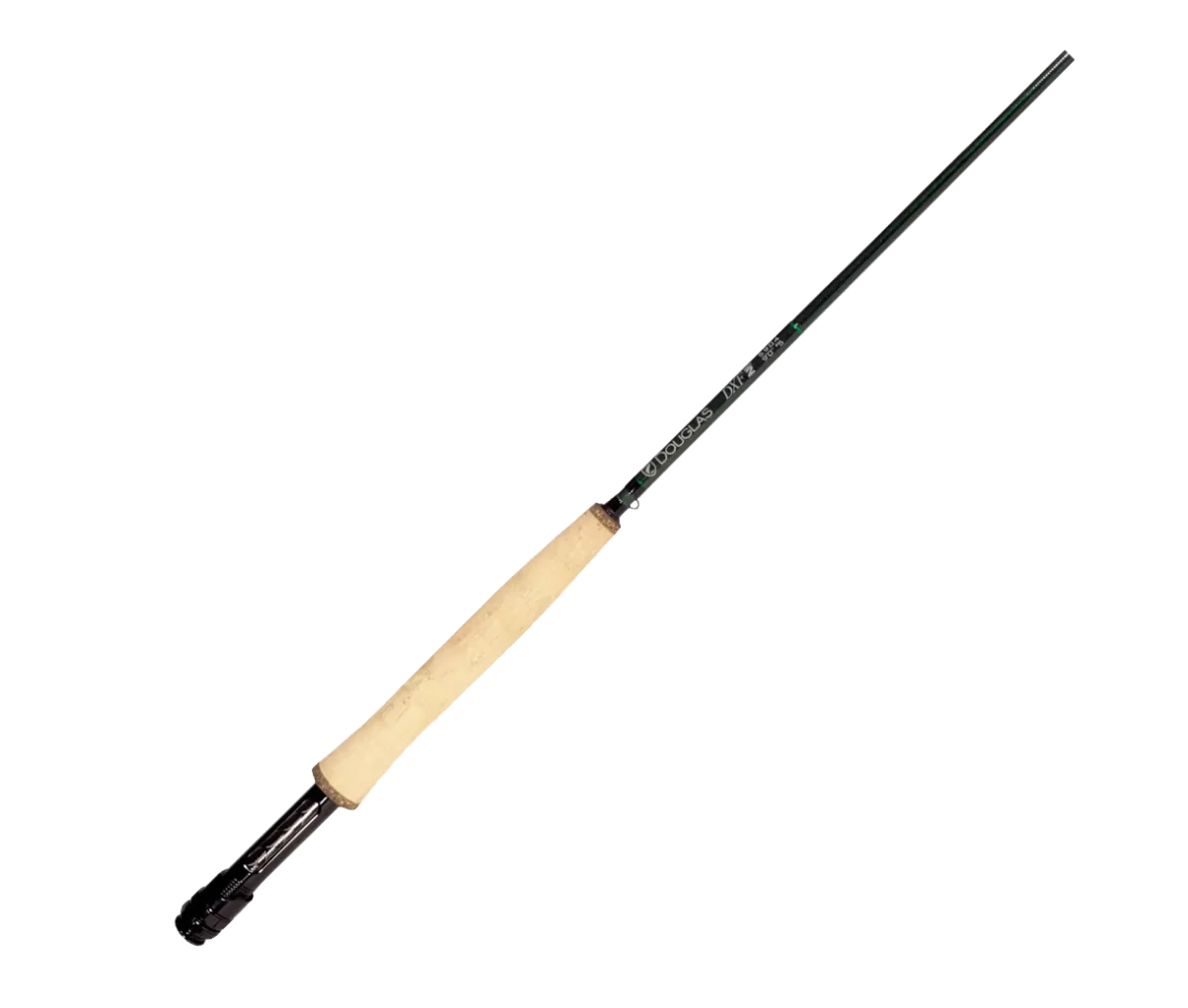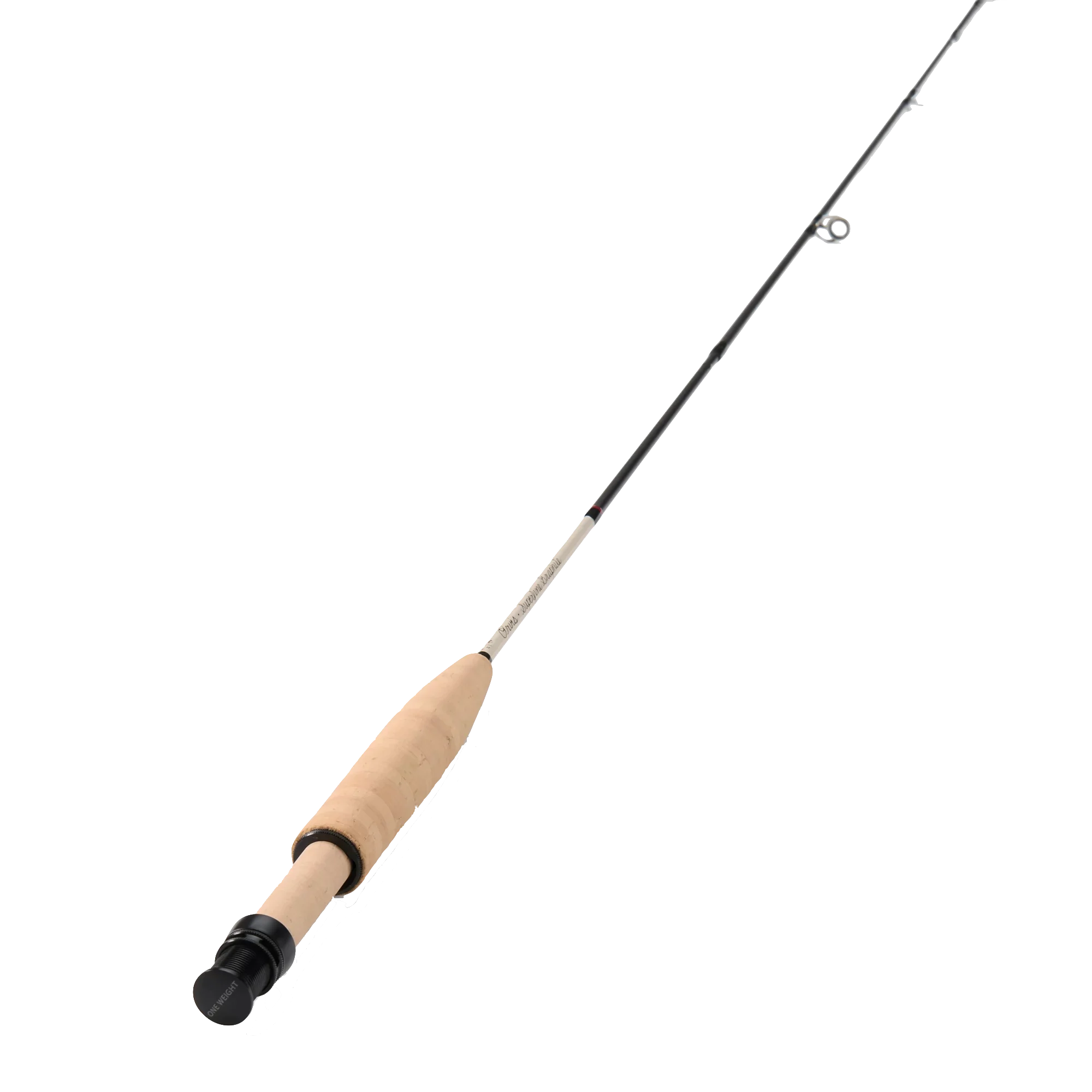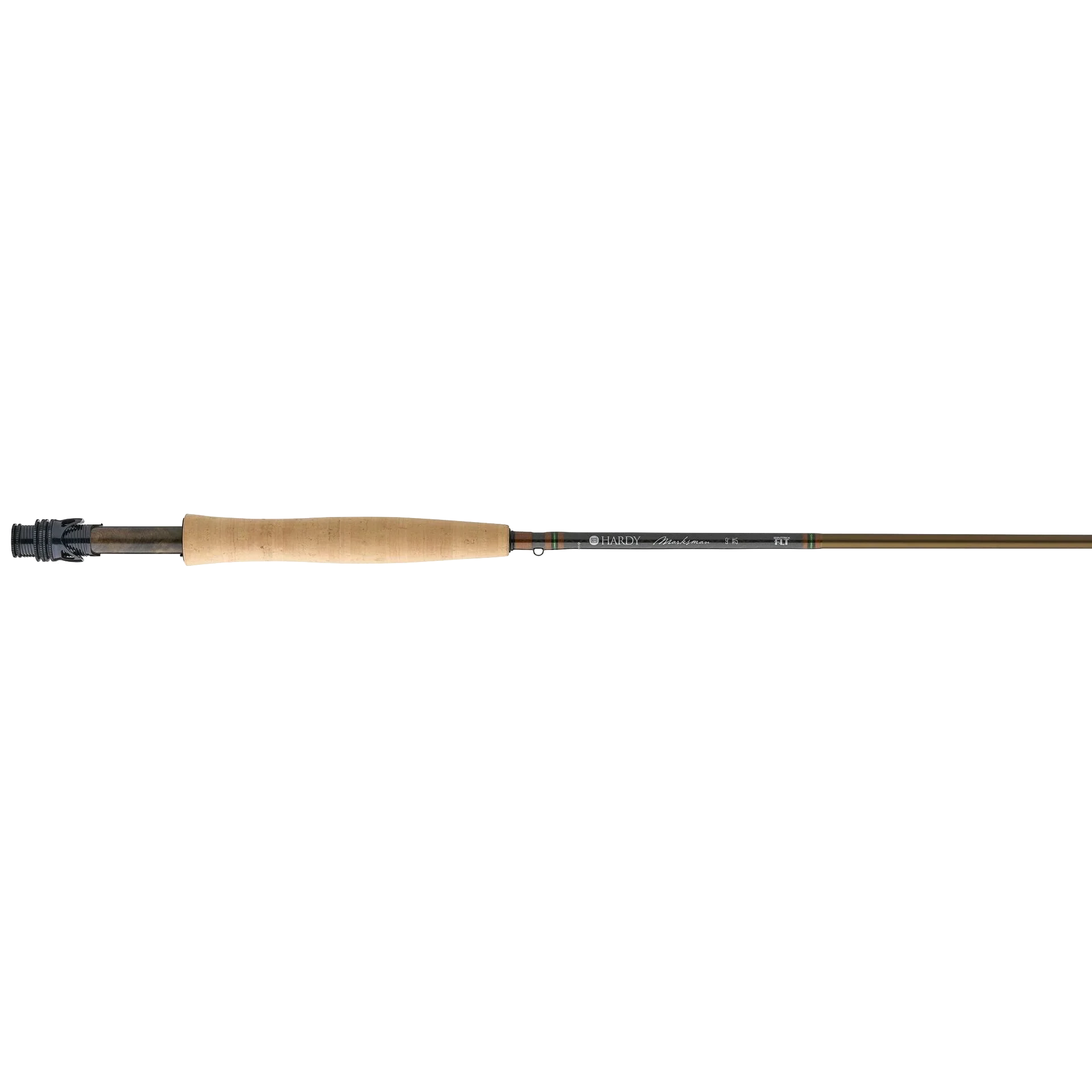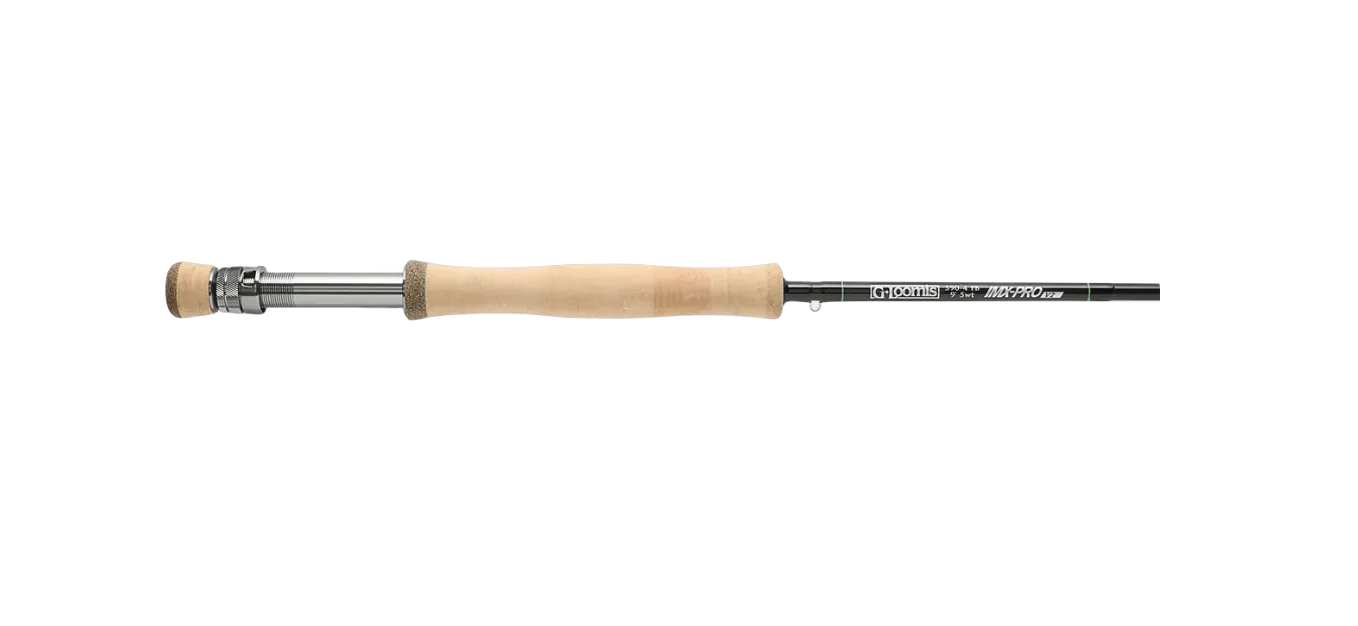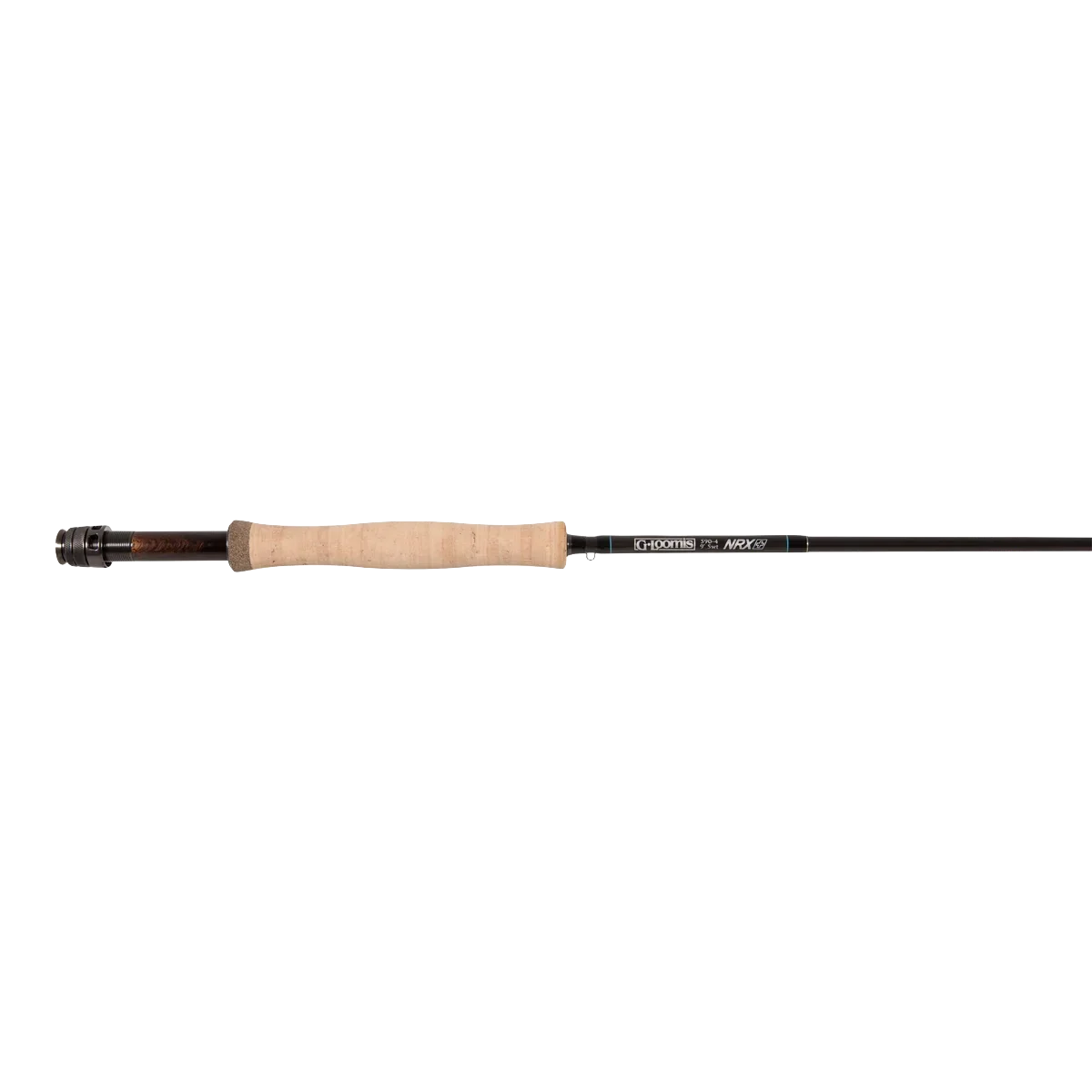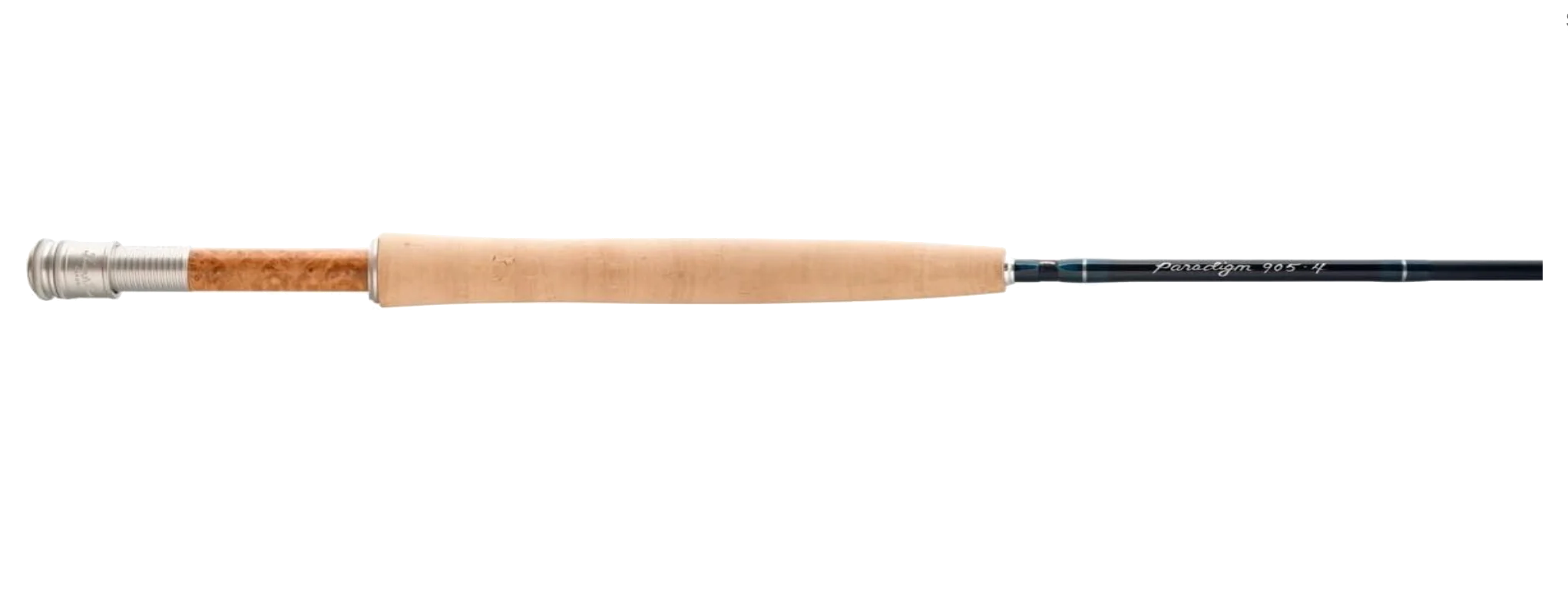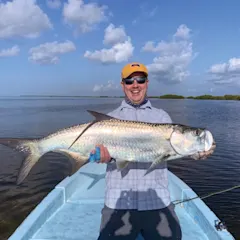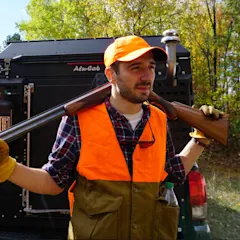We may earn revenue from the products available on this page and participate in affiliate programs. Learn more ›
Three years ago, in the name of research (and fun), a crew of Field & Stream editors assembled for the most rigorous fly rod test we’ve ever done. Since then, the limited release of new rods and scheduling conflicts prevented us from doing another fly rod shootout. Finally, we decided it was time to get the team back together (at least partially) and conduct a second full-blown test of the best trout fly rods on the market. So, this spring we reconvened at the unofficial home waters of F&S—the Upper Delaware River—to put a new collection of fly rods through the wringer.
We reached out to manufacturers and asked them to send us their best new 5-weight fly rods, as well as some budget and value models. While some companies have released new rods since our last test, many manufacturers kept their lineup the same. No problem. Since this is a test of the best trout fly rods and not just the newest, we kept many of our original reviews because these rods are still top performers. However, this year's test allowed us to include new rods, replace older models, and add anything we missed the first time around. In total, we tested over 20 rods, but only 16 made the cut. Here are the best trout fly rods you can buy today.

Best Fly Rods
Best Overall: Sage R8 Core
Best of the 2025 Test: Douglas Sky G
Best Value: Douglas DXF Gen 2
Best Budget: Orvis Clearwater
Best Small Stream Fly Rod: Orvis Superfine
The Rest of the Best Fly Rods
How We Tested the Best Fly Rods
For our test, we traveled to one of the most famous—and challenging—trout rivers in the country: the West Branch of the Delaware River. There are certainly easier places than the Upper D to catch trout, but easy is not what this gear test was about. We wanted to see how today’s best fly rods performed under the toughest and most technical fishing conditions possible, which the Delaware offers in spades.
We booked a motel room in Hancock, NY, and arrived with 12 fly rods, plus a few models from our previous test in a wide variety of prices (sub-$200 to $1,000-plus), actions (glass noodles to graphite broomsticks), and lengths (7 ½ feet to 10 feet). One specification they shared was line weight: We limited the test to 5-weights only. Another common thread across the test was the fly line we used. Similar to shooting the same load through every gun in a shotgun test, we spooled every reel with the same fly line—Rio Gold WF5F.

This year’s testers included Executive Editor Dave Hurteau and Senior Editor Ryan Chelius. As with our previous test, we spent a full day on the lawn casting for distance, accuracy, and power. We set targets at 40, 60, 70, 80, 90, and 100 feet. Then we split up into lanes to judge and compare the rods side-by-side. We recorded test-panel notes on each rod’s power, feel, control, and overall castability.
On the second and third day of the test, we took all the rods on the river to see how they performed in real conditions. The Hendrickson hatch offered sporadic dry fly fishing, and we also hooked into a few fish on nymphs. Most importantly, we were able to evaluate the rods for line management. How easy is it to mend? How much line can you kick out? How well does the rod control line for a perfect drift? Again, we considered distance, accuracy, and castability—plus aesthetics and warranty.
By the end of the third day, a few rods emerged as front runners for Best of the 2025 Test and Best Value. For over an hour, we stood side by side on the river, taking turns casting and comparing each of the finalists. We even conducted a blind casting test to eliminate any bias. After three days of casting, fishing, and more casting, we had our winners...
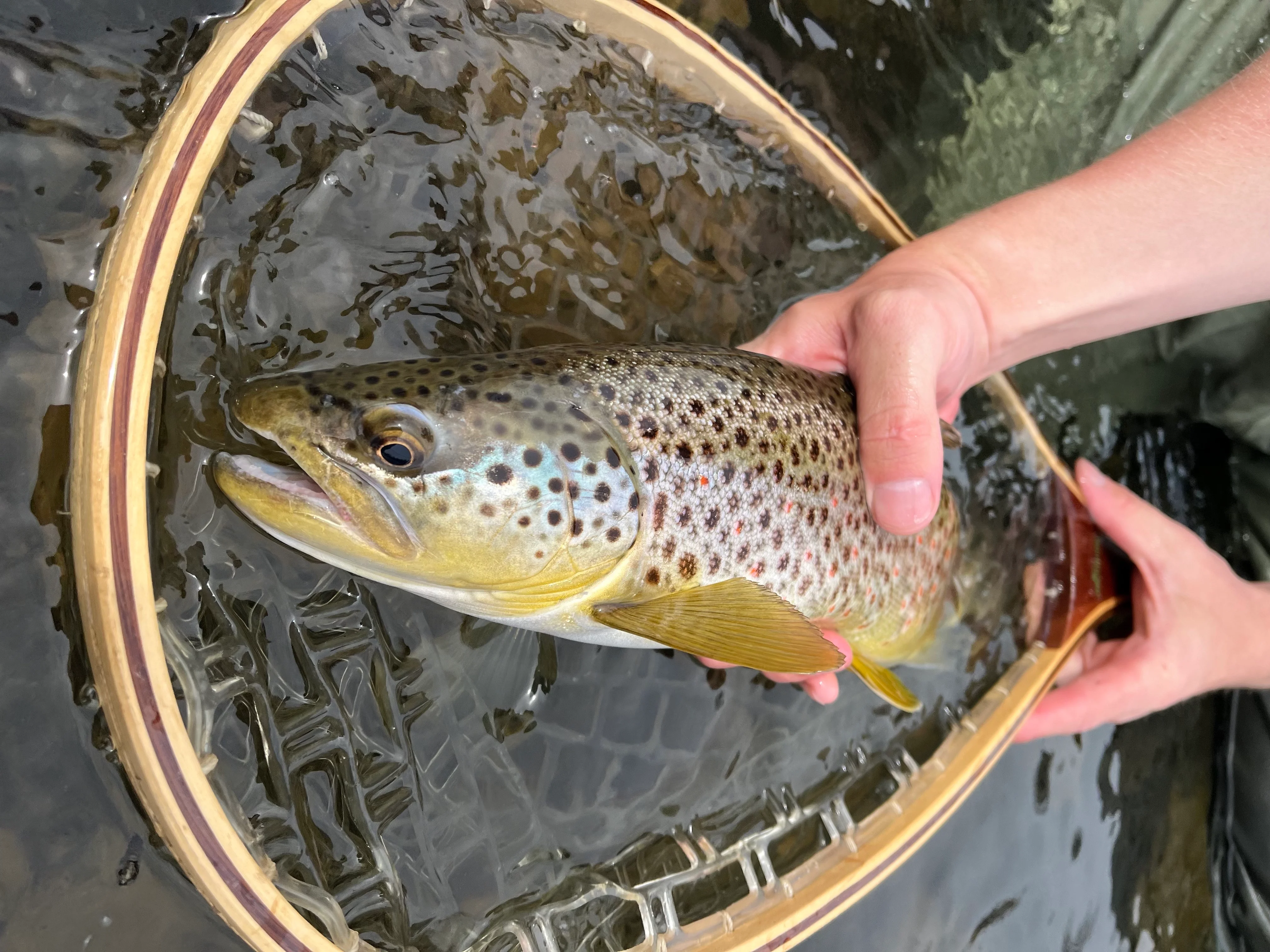
Best Overall: Sage R8 Core
Specs
Length: 9 feet
Line Weight: 5
Action: Fast
Pieces: 4
Warranty: Original-owner lifetime
Pros
Lightweight with surprising power
Highly versatile
Classic looks
Cons
Expensive
You’re looking at the back-to-back winner for the Best Overall trout fly rod. On the lawn, there’s a tendency to favor the purest caster or the biggest bomb-thrower. On the water, you take in everything. And that is what sets the R8 apart: It does everything really, really well. Most rods are an either/or proposition; you get distance or feel, lightweight or power. But the R8 is different. At just 2 11/16 ounces, it’s light and lively and has enough power to cut the wind. It finished right near the top of our test for distance and provided wonderful feel and line control on the water. It’s accurate at short and long ranges, a rare combo.
All of this makes the R8 extremely versatile: it’s as good a nymphing rod as it is a dry-fly rod, and while you wouldn’t call our 9-foot, 5-weight test model a streamer rod (nor expect it to be one in this age of monster meat flies), it’s got more than enough backbone for Zonkers, Buggers, Muddlers, and other traditional trout streamers. Anything you’d ask a 5-weight to do on the water, our test rod did, in spades.
Speaking of traditional, the aesthetics on this rod are classic Sage, which I really appreciate. (Like my own good looks, it’s understated.) The R8 Core replaced the excellent X series, with the goal of putting more flex and feel deeper into the butt section to boost control and accuracy. The company pulled it off beautifully. As good as the X was, the R8 is a lighter, better overall trout rod. I have only two quibbles: the components, while very good, are not the absolute latest, and—surprise—the rod is pricey. A few other rods in this lineup will shoot line a little farther or cast a bit more effortlessly, but the R8 rules on the water. Which, as you may know, is where the trout live. —Dave Hurteau
Best of the Test 2025: Douglas Sky G
Specs
Length: 9 feet
Line Weight: 5
Action: Fast
Pieces: 4
Warranty: Limited Lifetime
Pros
Extremely lightweight
Versatile
A joy to cast
Affordable compared to other top-end rods
Cons
Reel seat is a bit much
The Sky G is hardly a new rod, but, for whatever reason, we have never reviewed it. So, we included it in this year’s test, and, lo and behold, it wound up being our favorite all-around rod among the newly tested models. Given the Sky G’s popularity among serious trout anglers, we figured it would do well. But it’s when you cast and fish it side-by-side with the competition that you really appreciate why people love this rod: It does so many things so well, all while feeling virtually weightless in your hand.
By rights, a rod this light, both in terms of overall weight and swing weight, should not be so versatile, and yet the Sky G excels at most everything you can reasonably ask an all-around 5-weight to do. The butt and mid sections have enough power to reach far-off fish and land the biggest of them, while the softer tip section delivers good feel and excellent accuracy at short and mid-range targets. It was near the top, too, at managing line on the water.
The Sky G has a reverse half wells grip, matt-black blank, REC titanium recoil guides, and a skeletonized double-uplocking reel seat with burled blackwood insert, which brings me to my only real nitpick: On this otherwise classic-looking rod, I would much prefer a classic-looking reel seat, as opposed to the skeletonized one. But that’s it. There’s nothing else not to love about the Sky G. —D.H.
Best Value: Douglas DXF Gen II
Specs
Length: 9 feet
Line Weight: 5
Action: Fast
Pieces: 4
Warranty: Limited Lifetime
Pros
Powerful but accurate
Lightweight
Versatile
Excellent value
Cons
Not a fan of the emerald-flake look
The Douglas DXF Gen 2 was actually in the running for the best fly rod in this year's test. As we debated the winners, we kept circling back to the great value that the DXF offers. It is almost $400 cheaper than the Sky G and not far off in performance, which made it an easy pick for the Best Value award.
This is a moderate-fast action rod that can throw accurate bombs across the river. How do I know? During our second day of testing, I waded out to my chest to try and reach a rising brown. On my second cast, the DXF Gen 2 easily delivered a 70-foot cast right on target. I stuck the 16-inch brown and brought it to hand after a good fight in strong current. Time and again, the DXF Gen 2 proved to be powerful and accurate. Something that many rods don't achieve.
You'll be hard pressed to find a rod as good as the DXF Gen 2 for $500. No matter what we threw with the DXF—dries, nymphs, or streamers—it was up for the task. Better yet, the rod felt great in hand no matter the technique. The 5-weight version has a reverse half wells grip and stainless steel guides. On the lawn and the river, the DXF Gen 2 outperformed many premium rods that cost over a grand. The only thing I didn't like was the green emerald flake design in the blank, but that wouldn't stop me from making this my go-to trout rod for any situation. —Ryan Chelius
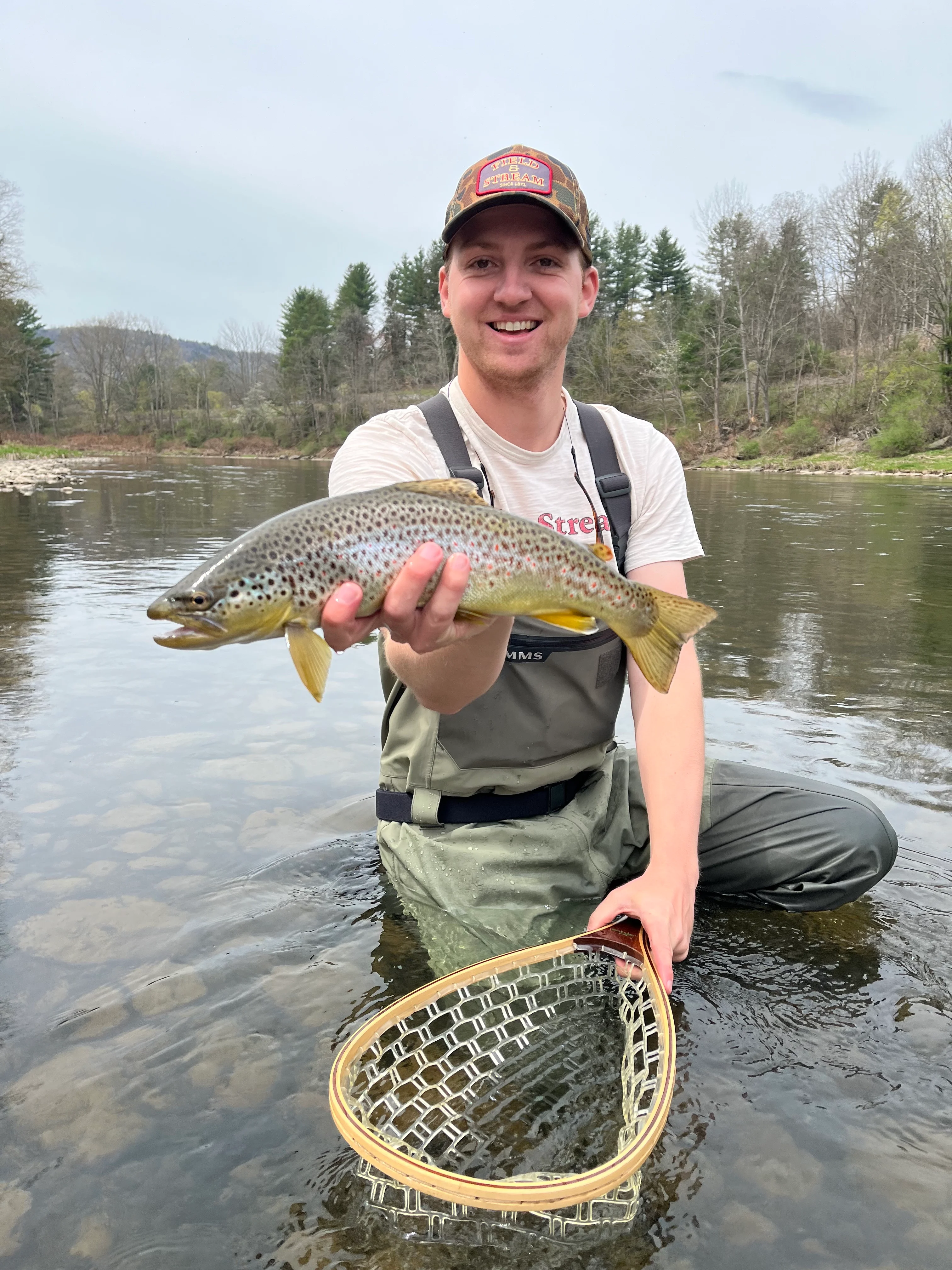
Best Budget: Orvis Clearwater
Specs
Length: 9 feet
Line Weight: 5
Action: Medium-Fast
Pieces: 4
Warranty: 25-Year
Pros
Killer bargain
Remarkably forgiving
Powerful
Cons
A tad heavy and unwieldy
Basic components
The Orvis Clearwater is the best budget all-purpose trout rod by a mile. You won’t find anything better for this price and you might even like it better than some fly rods that cost four times as much. How do I know? Because I did, at least briefly. As a little experiment, we decided to do a blind-casting test. We covered up the logos of a few of our favorite high-end rods and a few of our favorite low-end rods to compare them—and almost all of the testers put the Clearwater ahead of one or more of the high-end rods.
To be fair, this was a quick lawn-casting test, where we were focused more on distance and castability than on all-day fishability. But still, I found it as easy to shoot 90 feet of line from the Clearwater as with almost any other rod—and as effortless to throw tight consistent loops, too. Sure, the rod is comparatively heavy and might feel a little cumbersome to cast at the end of a long day. And on closer inspection, you’ll find that close-range accuracy isn’t great.
But from 25 feet out to 90, the Clearwater is an incredibly forgiving medium-fast rod with surprisingly good feel and decent line control. It requires a little more patience on the backstroke, but you get used to it quickly enough. The components are basic but fine, and there’s nothing wrong with the look of this rod, either. All in all, it is an astoundingly good rod for the money, and easily wins our Best Budget award. —D.H.
Best Small Stream Fly Rod: Orvis Superfine Graphite
Specs
Length: 7 feet, 9 inches
Line Weight: 5
Action: Medium-fast
Pieces: 4
Warranty: 25-Year
Pros
Shorter length is perfect for small water
Lightweight
Easy to cast
Cons
Can't handle big rivers
Not cheap for a specialty rod
I didn't know how much I needed a small stream rod until I picked up the new Orvis Superfine. For years, I fished with a 9-foot, 5-weight on my local stream—Clear Creek in Golden, Colorado—until I switched to the more compact Superfine this spring. I haven't looked back since.
A good small stream fly rod needs to be short (but not too short), lightweight, and have some backbone for the occasional big fish. The Superfine does all of this in spades. I rarely make casts longer than 40 feet on my home waters, but this rod can throw to 60 feet if need be. When I do make longer casts, it is easy to throw tight, accurate loops. Speaking of managing line, the Superfine is surprisingly good at mending and kicking line for a long, drag-free drift.
The length of this rod—7 feet, 9 inches—makes it perfect for maneuvering small streams and overhanging brush. Of course, you're somewhat limited with high-sticking capabilities, but the compact design is more important on small waters. That said, the Superfine still excels at traditional nymphing and dry fly fishing. It can lay out delicate casts for small dries and manage an indicator like any other rod.
Small fish are a blast to fight on this rod, and I've even brought a couple of 18-inch browns to hand. Trout of that size are pushing this rod's capabilities, but it's nice to know it can get the job done if a big one decides to eat. As far as looks are concerned, the Superfine has a white patch similar to the Helios at the end of the blank. But this is more of a cream color, which I like better. Not only was the Superfine an easy choice for Best Small Stream Fly Rod, but it is one of the best new fly rods for 2025. —R.C.
The Rest of the Best Fly Rods of 2025
Just because the following fly rods didn’t take home any of our awards doesn’t mean they won’t get the job done on the trout stream. In fact, a couple of these rods nearly won Editors’ Choice, and several are absolute bargains. Whether you’re looking for an all-around 5-weight, a dedicated streamer stick, or a good fly rod for the money, you’ll find it here.
Hardy Marksman
Specs
Length: 9 feet
Line Weight: 5
Action: Medium-Fast
Pieces: 4
Warranty: Hardy’s Worldwide Extended Warranty (you pay $75 to cover repair/replacement, handling, administration, and return postage and packing charge per claim)
Pros
Great dry fly rod
Extremely lightweight
Nice mix of power and accuracy
Cons
Expensive
Not particularly versatile
Remember the old Hardy Marksman? Well, you might want to forget it. This one shares the name but is an entirely new and different rod, not to mention a much better one in our opinion. For one thing, it is wonderfully light in the hand—one of the lightest in our test. The medium-fast blank, made of the company’s new Sintrix FLT graphite material, has a soft feel, especially in the tip section, yet it has surprising power.
I’m not saying it’ll run with the powerhouses here, but you don’t expect a rod this light and supple to have the reach it does. In one test on the lawn, I threw it 85 feet with two false casts. Accuracy was also very good, especially at close and medium-range targets. On the water, it threw tidy, consistent loops right where I aimed them. The rod is so lightweight that it seemed to take a little extra manipulation to make effective mends—a minor quibble—but it kicked line like a champ, which is something we really look for. Getting long, perfect drifts to fussy trout often means quickly and smoothly feeding line downstream, and the Marksman did that better than any other rod in this year’s test.
As you’d expect with Hardy, the looks are classy and, for the most part, understated. The Marksman comes with a reverse half wells grip and a matt gold/olive finish with a clear section that shows the graphite matrix in the butt section, for a little pop.
In the end, the Marksman was my favorite dry-fly rod. I wouldn’t call it a specialty rod, per se. It’s versatile enough to handle some nymphing and light streamer work. But if you fish mostly dry flies, you’ll want to take a close look at Hardy’s latest. —D.H.
G. Loomis IMX Pro V2
Specs
Length: 9 feet
Line Weight: 5
Action: Fast
Pieces: 4
Warranty: Limited Lifetime
Pros
Cast well for accuracy and distance
Quality reel seat
Affordable for a premium rod
Cons
Can feel beefy in hand
If you're looking to target big trophy trout, then the IMX Pro V2 is the rod for you. It was one of the beefier blanks in the 2025 test, but that's by design. On the lawn, my casts reached 80 feet consistently, and I even hit the 90-foot mark several times. Accuracy was surprisingly good, too. These results carried over to the on the water portion of the test. This was one of the few rods that could reach fish across the river while maintaining a good drift.
Beefier rods aren't usually great for nymphing or casting dry flies. Not the IMX Pro V2. I spent all of last summer nymphing with this rod in Colorado, and it impressed me time and again. Now, nymphing streams in Colorado is much easier than presenting a nymph in the technical conditions of the Delaware River. But the IMX Pro V2 came through in New York while high-sticking a couple of runs. As for dry flies, this rod doesn't have the same soft touch and feel as some of the other high-end models in our test, but it can still get the job done.
One of my notes from this year's test reads, "The IMX Pro V2 is a big fish stick." That's the perfect way to describe this rod. If big fish are on the menu, this is what you want in your hand. It has more than enough backbone to fight and land 20-plus-inch trout and has a fighting butt to help. I caught one of my biggest CO trout to date with this rod (see below) while nymphing last summer. The fish took me into heavy current, and without the backbone of the IMX Pro V2, I'm not sure I would've landed that fish. It isn't the cheapest rod on the market, but it certainly offers great value for what you get. —R.C.

Orvis Helios
Specs
Length: 9 feet
Line Weight: 5
Action: Fast
Pieces: 4
Warranty: Orvis 25-Year
Pros
Excellent accuracy
Lightweight
Good line control
Cons
Expensive
White label on rod butt is ugly
The newest iteration of Orvis’s flagship Helios comes in two versions, the Helios F, for finesse, and the Helios D, for distance. We tested the D, and despite what that letter stands for, the rod did not blow us away in that test category. It did perfectly fine. We had no problem getting 80 to 85 feet out of it, which should be enough for most anglers. But there were longer-casting rods in this year’s lineup.
Where the Helios dominated was in accuracy, which is exactly what it was designed to do. The action is on the slower side of “fast,” delivering lots of feel that translates into control. According to the company, this Helios is four times more accurate than its predecessor, and they say they can prove it. Can they really? Who knows? But there must be something to the tip-displacement-reduction technology they introduced in the very accurate Helios 3 and enhanced in this newest version, because this rod was noticeably more precise than others we tested, both at short and especially at medium and longer ranges.
The newest Helios is also lighter in the hand than its predecessor, for all-day casting. On the water, it was one of the best for mending and general line management, as the softness of the blank allows you to manipulate line without disturbing your fly’s drift. Our test rod had a snub-nose half wells grip and a matt-black finish that would be very tasteful if it weren’t for the white label at the butt section. I’ve been told that some people like the white label, but I’ve never met any of them. On the other hand, if you want everyone else on the water to know you’ve got a Helios, it’ll help there, and, in truth, it’s not such an abomination that it should keep you from buying what is a truly excellent rod. —D.H.
St. Croix Technica
Specs
Length: 9 feet
Line Weight: 5
Action: Medium-Fast
Pieces: 4
Warranty: Warranty Charge Exist
Pros
Great for finesse dry-fly fishing
Classic look
Excellent line management
Cons
Expensive
Not very versatile
St. Croix’s latest flagship trout rod balances out the company’s top-end offerings. Whereas the fast-action Evos is a power rod, the newer Technica is all about finesse. The action is listed as medium-fast, but it feels slower than that—in a good way for those of us who remember that “soft” and “slow” are good things when you’re trying to put dry flies on the noses of selective trout.
The slower butt and mid-sections make for a smooth-loading rod, while the slightly faster tip helps with picking up line, unfurling long leaders, kicking line for long downstream drifts, and quick hooksets. Obviously, the Technica couldn’t hang with the distance rods on the lawn (it wasn’t made for that), but it’s performance on the water—making accurate casts and delicate presentations; mending and manipulating drifts—was right there with the best.
The Technica has a snub-nose full wells grip and uplocking aluminum reel seat with tiger-maple insert; overall the look is classic and understated. As long as you understand what the Technica is made for—not power or versatility, but for finesse dry fly fishing—you won’t be disappointed. If you’re game is trying to fool the savviest trout on spring creeks, long tailouts, or still waters, it’s just the thing. —D.H.
Scott Centric
Specs
Length: 9 feet
Line Weight: 5
Action: Fast
Pieces: 4
Warranty: Original-owner lifetime
Pros
Easy to cast
Surprising distance
Responsive tip for roll casting and mending
Cons
Not quite as accurate at short range
If you told me that you like the Centric better than the Sage R8 Core, I’d disagree but wouldn’t argue. Unlike the ultra-fast Radian model it replaced, the Centric is a fast-action rod with tremendous feel and control. It throws consistent, flat loops almost by default, and the job of opening or closing those loops—to cast nymphs or to fire a long cast—requires not much more than a thought. The rod’s responsive tip makes for easy roll casting and mending, too, and the Centric was superbly accurate at medium and long ranges.
You don’t expect a rod with this much feel to go long, but the Centric surprised us. It’s not the rifle that the Radian was but casting the whole fly line with a few false casts was not a problem. Like the R8, the Centric is very good on the water. (We just felt the R8 was a fraction better.) Short-distance accuracy was good, but not great. Personally, I could take or leave the micarta reel-seat insert, but all in all, it’s a great-looking rod with high-end components. Ultimately, the R8 nipped the Centric in our test, but if the No. 1 thing you want from a fly rod is the pleasure of throwing perfect loops, cast after cast, I’d say get this one. —D.H.
Epic Reference 590G Carbon Fiber
Specs
Length: 9 feet
Line Weight: 5
Action: Medium-Fast
Pieces: 4
Warranty: Lifetime
Pros
Fly line scorches through the guides
Light and accurate
Strong in a fight
Cons
Clunky-looking reel seat
Consensus on the other Epic fly rod in our previous test was slightly less unanimous than with the 4-weight glass rod, which everyone loved. The testers admired the balance and control the Epic Reference 590G Carbon Fiber delivers—and while there weren’t any knocks against this rod, there were a couple of nitpicks when it came to versatility and aesthetics. Given the rod’s medium-fast action, some felt it was better suited for smaller waters than a big river, like the Delaware. And more than one tester commented that the rod’s looks didn’t do it for them. (The reel seat, specifically, stood out to some.)
Personally, this was one of my favorite rods of the test. During our distance sessions on the lawn, I fired my longest cast of the trip with the Reference 590G (93 feet). And when I was aiming at nearer targets for accuracy drills, I was impressed with the tight, precise loops the Reference threw. I’ve used this rod on big rivers (like the Delaware) and small creeks (like, well, I’m not saying where). It excelled on both, but I might’ve preferred it a bit more on the creeks where its ability to deliver ultra-accurate dry-fly presentations really shines. And as with the 4-weight Epic, fighting fish with this rod is a total blast.
As for looks, I can see why the aesthetics of the Reference 590G might not appeal to everyone. But the truth is, I like this rod so much that its design has really grown on me. Where some may see a modern, synthetic-looking rod, I see one that’s slick and stealthy. —C.K.
Airlite Vitesse
Specs
Length: 9 feet
Line Weight: 5
Action: Extra-Fast
Pieces: 4
Warranty: Lifetime for current models
Pros
Lots of power for long casts
Affordable
Cons
A little butt-heavy
Good, but not great, line management
Mayfly Outdoors, which owns Abel, Ross, and Airflo, announced its U.S. launch of Airlite in early 2025 with an eye toward offering high-performance rods at an affordable price. And with today’s top-end rods pushing past the $1,000 mark, who doesn’t want that? The Vitesse is an extra-fast-action rod designed to be a bomb-thrower, and that’s just what it proved to be in our tests. On the lawn, it launched tight consistent loops past the 95-foot mark, making it one of the longest-casting rods in the bunch.
What you give up for all that power is some feel and balance. We found the Vitesse to be a bit butt-heavy, and it couldn’t quite hang with the top-end rods in terms of line management on the water. It’s a small step down aesthetically, too (I like the red label on the butt about as much as I like Orvis’ white one), but that’s to be expected—and it’s also the end of my quibbles. Accuracy was surprisingly good for such a powerful rod. The bottom line here is that if what you want in a fly rod is power and reach—if you fish big water or do a lot of streamer fishing—the Vitesse will do the job well, at about half the price. —D.H.
G. Loomis NRX+
Specs
Length: 10 feet (test model)
Line Weight: 5
Action: Fast
Pieces: 4
Warranty: Limited lifetime
Pros
Powerful, accurate, and versatile
Great for casting into strong winds
Made in the U.S.A.
Cons
Heavy
At 10 feet long, the NRX+ was the longest rod in our tests. It is also a complete workhorse. The rod generates tremendous line speed and shoots a ton of line (one tester described the NRX+ as a “missile launcher”), while also delivering consistent loop stability and accuracy.
During our 2022 test, I fished the NRX+ and had the best session on the Delaware River of my life. We hit a sulfur hatch just right, and I landed five wild brown trout in just a couple of hours. Given the size and weight of this stick (it’s the longest and heaviest in our test), I was pleasantly surprised by how little feel and finesse is compromised. G. Loomis markets the NRX+ as almost being overbuilt—they say the rod “empowers anglers with confidence-booting control in less-than-ideal conditions.” Well, I fished with it in conditions that were as close to ideal as they get, and the rod performed beautifully.
It’s worth noting that the 5-weight NRX+ is available in a 9-foot model without a fighting butt. Due to supply-chain issues, though, G. Loomis only had the 10-foot model to loan us for our test. Had they been able to send us the other model instead, the competition for our Editors’ Pick Award would have been really stiff. —C.K.
Temple Fork Outfitters Blue Ribbon
Specs
Length: 9 feet, 5 inches
Line Weight: 5
Action: Medium-fast
Pieces: 4
Warranty: Lifetime
Pros
Great value
Loads and casts smoothly
Cons
Not much power
My roommate just started fly fishing, and I recommended the TFO Blue Ribbon as her first rod. She has improved dramatically over the summer and is catching a ton of trout every time we go out. If that isn’t a confirmation that the Blue Ribbon is a great beginner rod, I don’t know what is.
This medium-fast action is ideal for new anglers learning to cast. The slower action helps the rod load effortlessly, giving the angler time to focus on where they’re casting. I found the Blue Ribbon to be easy to cast and comfortable in hand. I caught plenty of fish on this rod in my post-test trials on double-nymph rigs, dry flies, and streamers—proving its versatility.
The carbon-fiber blank is paired with stainless-steel guides and a premium cork grip to make for great durability. I did find that I couldn’t cast very far with this stick. But what it lacked in distance, the Blue Ribbon made up for it in consistency and durability. It was also the cheapest rod in our test. Paired with TFO’s lifetime warranty, it is one of the best values you can find. —R.C.
Temple Fork Outfitters LK Legacy
Specs
Length: 9 feet, 5 inches
Line Weight: 5
Action: Fast
Pieces: 4
Warranty: No-fault lifetime
Pros
Durable carbon-fiber rod blank
Budget-friendly
Cons
Not good for distance
While not outstanding in any single category, the TFO LK Legacy still performed well enough to earn my nod of approval for a solid trout rod. The fast action and smooth casting ability make this a good option for intermediate anglers. It didn’t compete with the higher-end rods, but for the price, it performed admirably.
On the casting lawn, I struggled to get distance out of the LK Legacy, but it was accurate with short casts. The carbon-fiber blank paired with stainless-steel guides and a full-anodized reel seat makes this an extremely durable fly rod. It is ideal for anglers looking to have one rod to fish a variety of techniques. Nymphing was where this rod shined. I was impressed with the rod’s ability to roll cast, mend, and manage line. It took little to no effort to roll cast my double-nymph rig over and over.
The rod isn’t the most balanced, and experienced anglers who are used to light fly rods might struggle at first with the LK Legacy. It felt bulky casting dry flies to trout in hard-to-reach places. I’m not sure if this was because of the weight of the rod or how it was balanced. But either way, I got tired. The aesthetics of this rod are not notable. It has a clean look and a standard modern design. TFO also offers a no-fault lifetime warranty on all of their rods, so even if something goes wrong, you’ll have a replacement in no time. —R.C.
Thomas & Thomas Paradigm
Specs
Length: 9 feet
Line Weight: 5
Action: Medium
Pieces: 4
Warranty: Lifetime
Pros
Drop-dead gorgeous
Handmade quality
Cons
Expensive
If you want a cold, efficient tool with no aesthetic qualities, look somewhere else. Good looks are a big part of the Thomas & Thomas Paradigm’s appeal. But the rod doesn’t lack in performance. It just performs with style, like a vintage sports car.
My first impression of the Paradigm was that I could cast it all day long. And I did. During our distance test, I kept taking the Paradigm away from other testers for “just one more cast.” After that, we took the rods on the water, and I hogged this one for nearly the whole afternoon. Compared to so many of today’s fast-action rods, this one just felt different. Thomas & Thomas says that the rod has a “classic” action close to the original (and much celebrated) Paradigm of 20 years ago. I found it to be slow to moderate, and definitely not dull or sluggish. One of the testers noted that “time seemed to slow down” when casting the Paradigm, and I couldn’t agree more.
Most important, though, is that the smooth action of this rod lends itself to delicate, accurate dry-fly presentations. On the West Branch of the Delaware River, you may only get one chance at a rising trout. I strike out more often than not there, but I felt confident with the Paradigm and was able to hook a couple of fish. In close quarters, the Paradigm was extremely controllable, yet it still had enough power to reach out to far-away cut banks and pools with accuracy. —M.E.
What to Consider When Choosing a Fly Rod
Selecting a fly rod for trout fishing is not as simple as picking up the first 5-weight rod you see in a fly shop and giving it the “wiggle test.” You need to think about your experience level, how you fish, where you fish, and what you need your rod to do. A trout angler who fishes big rivers in the West will want a different style rod than a trout angler who mostly fishes small streams or spring creeks. Fishing style and technique also play a major role in determining what fly rod best suits the situation. Here are four main considerations before buying the best fly rod for you.
Materials
The two most common materials used to make fly rods are graphite (carbon fiber) and fiberglass. Fly rods with graphite blanks are the most popular because they’re easy to cast and lightweight. The majority of the rods we tested are made of graphite, and it’s the material we recommend for beginner anglers looking to purchase their first fly rod.
Fiberglass, or “glass rods,” as they’re often referred to, are more durable, flexible, and heavier than graphite blanks. The first thing anglers will notice when picking up a glass rod is the flexibility and sensitivity. Glass rods load much slower, which can often be an issue for anglers who are used to faster-action rods. The increased sensitivity, however, makes glass rods ideal for small fish in creeks and streams.
Length
The length of your rod is going to be a determining factor in how you fish. The standard length for a traditional trout fly rod is 9 feet. A 9-foot rod offers versatility to fish nymphs, dry flies, and streamers. We recommend a 9-foot, 5-weight rod to beginners. From there, you can tailor the length of your rod to specific techniques and situations. A shorter fly rod is ideal for small streams where there tends to be a lot of overhanging brush and foliage. Longer rod blanks excel at nymphing because they give anglers the advantage of making a drag-free presentation and mending more easily. The length of typical trout fly rods ranges from 8 feet 6 inches to 9 feet 5 inches. Anything shorter or longer is most likely for specific fishing styles and techniques.
Action
The action of a fly rod determines how fast or slow it loads. In simpler terms, the slower the action, the longer it will take for the fly line to reach its full length on a backcast. Most modern fly rods—including the majority of the rods in our test—are designed with a medium-fast or fast action. A fast action helps cast through stiff wind but isn’t ideal for beginners. Experienced anglers are more likely to use fast-action rods due to their strong backbone and ability to load quickly. We recommend that beginners start with a medium or medium-fast action. This creates more time for anglers to get a feel for false casting and forces them to slow down their casting enough so they can focus on making a good presentation.
Technique
Your style of fishing is the most important consideration when buying a fly rod. Do you want something that can do it all? Are you fishing in small streams or big water? Are you throwing heavy flies? The answers to these questions will help you determine the best fly rod for your style. The three main techniques to fly fishing for trout are nymphing, dry-fly fishing, and streamer fishing. Nymphing requires you to manage line and present flies with as little drag as possible. Longer rods increase line control and help lessen drag with techniques, such as “high sticking” or Euro nymphing. Dry flies require subtle presentations and mending to present the bug as naturally as possible to trout. Most 9-foot rods offer enough length to make long casts and manage line well for dry flies. Streamer fishing often requires throwing large and heavy flies. A fast-action rod with a strong backbone will excel at handling heavier fly patterns. You sacrifice some sensitivity with some fast-action rods, but that’s not the end of the world—because there’s nothing sensitive about a trout striking a streamer.
FAQs
Q: What length fly rod should I get?
The most common length for a fly rod is 9 feet. That said, you should base the length of your rod on your style of trout fishing. If you plan to do a lot of high-sticking, then a 9-foot 5-inch or 10-foot rod will benefit you the most. If you fish small streams and mountain creeks, you’ll want a shorter rod to contend with overhanging brush. But if you’re looking for a general-purpose fly rod for trout, your best bet is to buy a 9-foot 5-weight.
Q: How much should I spend on a fly rod?
If our fly rod tests have taught us anything, it’s that expensive doesn’t always mean better. The Orvis Clearwater retails for $250, and it beat out multiple premium rods valued at over $900. You don’t need to spend a fortune to get a quality fly rod that is capable of catching trout. There are plenty of lower-priced rods that will get the job done, including the Orvis Clearwater and TFO Blue Ribbon. That being said, premium rods are expensive for a reason. Our best overall pick, the Sage R8 Core, retails for $1,050. We all agreed it was one of the smoothest, most balanced rods we’ve ever cast. It has great power, feel, accuracy, and line control. Is it worth over $1,000? We think so, especially for experienced anglers who will appreciate its versatility and design.
Q: What is the best fly rod for a beginner?
The best beginner fly rod doesn’t mean the cheapest fly rod. A well-built rod that you can grow with and fish for years is a great investment. So, don’t automatically turn to the price tag to make your decision. Instead, look for a medium-fast-action rod in the 9-foot range. This will help cut down the casting learning curve by slowing down your backcast and allowing the rod to do the work. A medium-fast action rod forces you to take your time and focus on your casting technique.
Why Trust Us
For more than 125 years, Field & Stream has been providing readers with honest and authentic coverage of outdoor gear. Our writers and editors eat, sleep, and breathe the outdoors, and that passion comes through in our product reviews. You can count on F&S to keep you up to date on the best new gear. And when we write about a product—whether it’s a bass lure or a backpack—we cover the good and the bad, so you know exactly what to expect before you decide to make a purchase.

